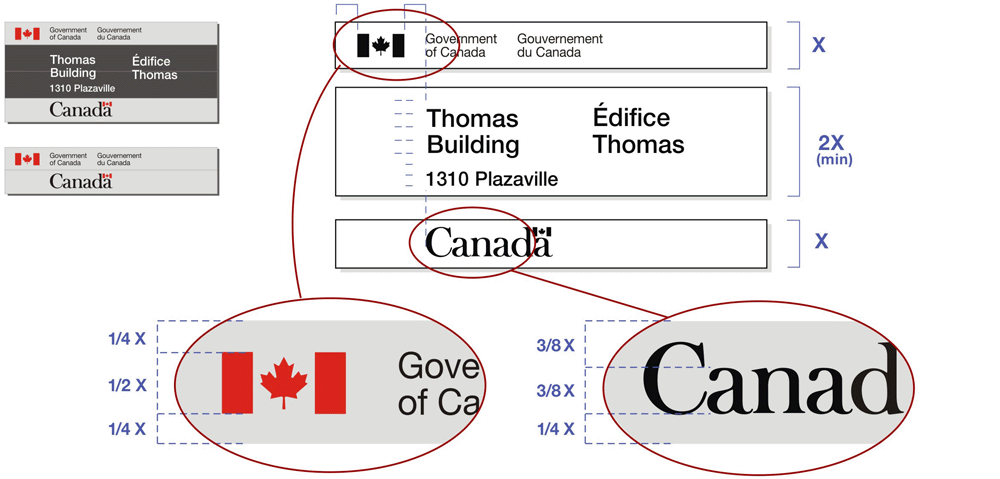Primary Identification Signs
These technical specifications (T-605) set out the requirements for the design of primary signs. Primary signs consistently identify Government of Canada buildings, complexes, campuses, engineered structures and other real property to the public. This applies to Crown-owned and long-term leased real property. Facilities with multiple access points require multiple primary signs. This sign design and layout may also be used within a building when it is necessary to distinguish Government of Canada facilities or services from private or commercial space.
Custodian departments are responsible for ensuring signs are well maintained, the information is up-to-date, and damage is attended to promptly. Consult your Federal Identity Program coordinator for more information.

Requirements
Design
- The primary identification sign is divided into three horizontal bands:
- The top band is light grey and contains the Government of Canada signature, or a departmental signature, in red and black.
- The middle band is dark grey and contains a concise message in both official languages in a side-by-side format. The text is white in a Helvetica medium typeface.
- The bottom band is light grey and contains the Canada Wordmark in red and black.
- No other mark, sign, symbol, or insignia or graphic element appears on the primary identification sign.
- Signs that are positioned perpendicular to vehicular and pedestrian traffic are identical on both sides.
- The combined area of the light grey bands (top and bottom bands) does not exceed the area of the dark grey band (middle band).
- The message in the middle band is limited to a maximum of two of the following:
- Name of department
- Name of a program or service
- Name of a building, structure, complex or campus
- Municipal street address
- The design is scalable to accommodate large and small signs. The size of the sign is determined by factors such as sight lines, viewing distance and vehicular speed.
- Once installed, primary identification signs do not exceed a height of four metres.
Materials
- Signage components are painted, machined aluminum extrusions, fabricated to specific engineering specifications.
- Interior surface mounted primary signs may be fabricated using plastic materials such as polyvinyl chloride (PVC). Materials used to support the sign are compatible with and as durable as the sign itself.
- Die-cut vinyl is used for all text and official symbols.
Related information
- Canada Wordmark (T-130)
- Flag Symbol Signature (T-135)
- Arms of Canada Signature (T-140)
- Colour Values (T-145)
- Policy on Communications and Federal Identity
- FIP Manual - 4.1 Signage: System overview and implementation
- FIP Manual - 4.2 Primary identification signs
Note: If there is a discrepancy between an official Treasury Board policy instrument and information on this Web page, the Treasury Board policy or standard prevails.